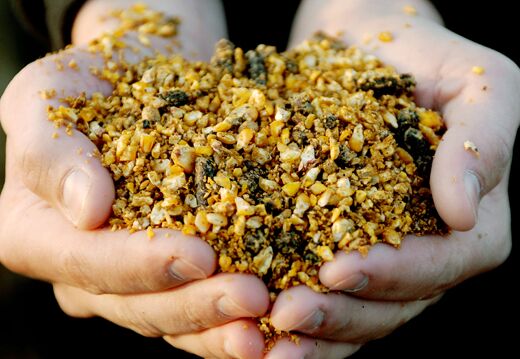
Rise in Food Prices Set to Continue
Food prices rose 10 percent last year. That finding appeared in the “World Economic Outlook” report released by the International Monetary Fund (imf) this month. The imf stated the increase was “driven mainly by surging prices of corn, wheat and soybean oil in the second part of the year”—some of the main crops used in developing biofuels, most notably ethanol.
The 10 percent increase in the checkout line reflects only the first leap in the rise of biofuel crop prices. As there has been a corresponding record-breaking rise of corn prices over recent months, we can expect delayed increases in food prices to take effect once wholesale prices are passed on to the consumer. The Wall Street Journal reported April 9, “If the trend continues, U.S. consumers are likely to see higher prices at the supermarket for everything from milk to cereal to soda pop, since corn is used to feed livestock and make high-fructose corn syrup, a key ingredient in many soft drinks.”
Normally, food price increases are swiftly followed by a decrease; this time, by contrast, food prices are likely to stay high. In fact, given the current high demand for corn and other biofuel crops, it is likely prices will continue to rise. In this crisis, the shortage is caused not by the usual natural disaster or bad season, but by over-demand, induced by a longer-lasting stimulus. These crops are not only being used for bodily consumption, but, more particularly, fuel consumption. In essence, there is a war over supply of corn driving the price of crops up, and with it the price of food.
“The price of corn has more than doubled, since it is now a competitor to oil rather than food grains, putting ranchers, hog farmers and other feed users under enormous pressure,” writes David Runnalls, ceo and president of the International Institute for Sustainable Development (iisd). “According to U.S. food policy expert Lester Brown, if all the ethanol plants that have been approved for the next year are built, ethanol will be eating more than 40 percent of the entire U.S. grain crop by 2008.”
Never before have we experienced this dilemma, because, put simply, we can’t eat oil. But now that edible material is being used as an alternative to oil on a grand and growing scale, the food landscape has changed forever.
Exacerbating the problem is the fact that both European and U.S. governments have set lofty goals to boost the production of biofuels, particularly ethanol, further straining the corn supply. The imf reports, “Plans to double the minimum mandated biofuels consumption in the United States—the largest ethanol consumer—by 2017 would require an estimated 30 percent rise in corn production …” (op. cit.). Added to these goals, the U.S. government has allotted an estimated $5.5 billion to $7.3 billion in ethanol subsidies per year. Whether it is unaware of the potential hazards or just unwilling to adjust its forward thrust toward biofuels, the U.S. government may be digging itself a hole far greater than the one caused by oil dependency.
Just as the United States is increasing the number of ethanol refineries, other countries like China are restricting construction, realizing the danger in converting too much of their corn to ethanol at the expense of feeding their population.
But, one may say, if the problem revolves around a shortage of supply, why not plant more corn?
Well, they are—at an unprecedented pace—but, it seems, not fast enough. The imf wrote, “For 2007, the United States Department of Agriculture is estimating a record corn crop as planting areas increase by 10 percent from 2006 at the expense of soybeans and cotton. Still, demand fueled by the increase in domestic ethanol production capacity is expected to outpace the production rise.” Even though the government is moving to dedicate more farmland to growing corn, the increase will not be enough to fuel its ethanol appetite unless more corn is diverted away from food production, further aggravating the problem.
India and China also have had to tighten their belts because of the shortage of crops. Both countries are suffering from similar price increases in food resulting from undersupply—or more appropriately put, increased demand. Their bulging populations and expanding growth rates necessitate a corresponding growth in production, which to this point has been achievable. But not for much longer. “In fact, China and India have achieved historically high production of some crops in recent years, only to see prices continue to climb” (Wall Street Journal, op. cit.). They are experiencing bumper crops and still food prices continue to rise.
The ramifications of the global push toward biofuels are overwhelming. Not including the environmental impact, the strain that expanding biofuel usage puts on food prices is quite scary. The knee-jerk reaction to find alternatives to oil has led to what could become a far greater problem.
Simply: These price increases are a result of man trying to solve one problem, but ending up creating another.
God offers His help, saying, “[C]ome now, and let us reason together” (Isaiah 1:18). But man, ignoring the Instruction Manual, which includes farming principles, chooses problems over prosperity.
Worldwide prosperity will come, however. A time of plenty will shortly appear. While we may not be able to change the worldwide food crisis at the moment, we can experience prosperity on the individual level right now, as God has promised to supply our need, if we obey Him (Philippians 4:19).
